- Home
- Drawing Supplies
- How to Store Charcoal Drawings
How to Store Charcoal Drawings
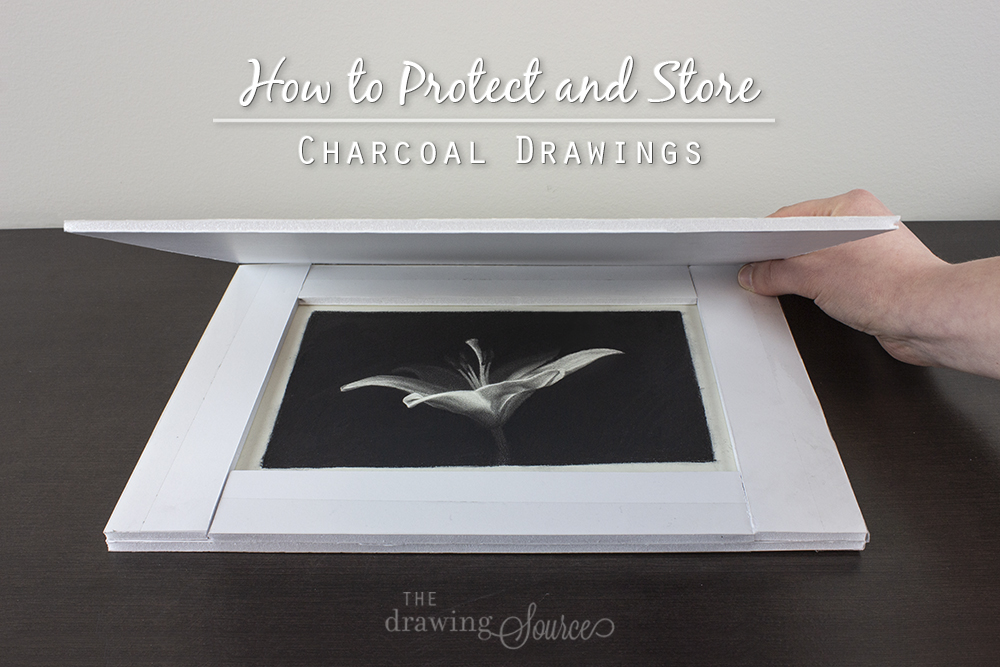
You've just finished your latest, sensational charcoal drawing. Now what?
Most likely, it will need to be safely stored for some time.
Even if you frame it, sell it, and everything is beyond fabulous, you will need a safe way to transport the drawing from your home to the frame shop! (Especially if it's drawn in charcoal, which doesn't take kindly to any accidental pokes or prods.)
So, what do you do?
How to Store Charcoal Drawings:
Commonly Recommended Methods
Commonly recommended methods include
using a spray fixative, or layering a smooth, glossy paper such as
glassine between drawings.
I personally choose to use a third method. In my opinion, the only surefire way to prevent damage to the surface of a drawing is to make sure that nothing touches or disturbs it.
While you can get away with layering glassine on top of graphite drawings (though it's not ideal), I wouldn't place anything on top of a charcoal drawing. It simply smudges too easily.
Should you use hairspray to secure your drawing?
No, I do not recommend spray-fixing your drawing with hairspray. It is not meant to be used on paper, and is not acid-free or archival, so it could eventually eat through or degrade your drawing.
Should you use a different spray fixative to secure your drawing?
To use spray fixatives or not is a hotly debated topic. For me, it's not worth the risk
of the spray appearing blotchy or changing the values of my drawing.
It's entirely possible that other artists have found products and developed techniques to avoid these pitfalls, and if you feel called to research spray fixatives, I whole-heartedly encourage you to do so.
However if, like me, you would really rather be drawing, I offer you the following solution:
How to Store Charcoal Drawings?
Build a Carrying Case!
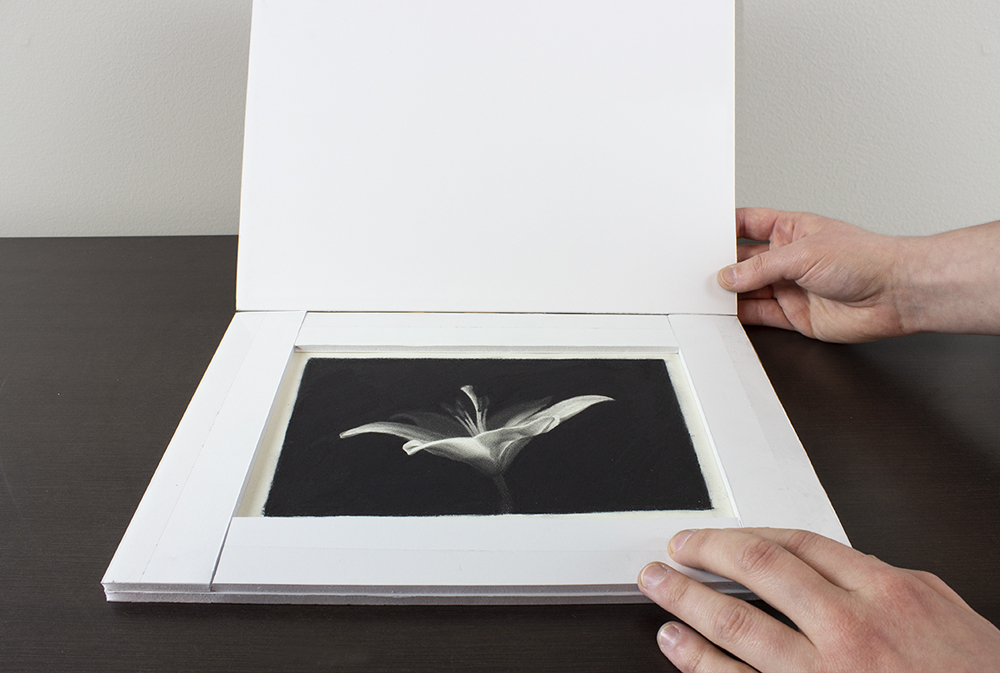
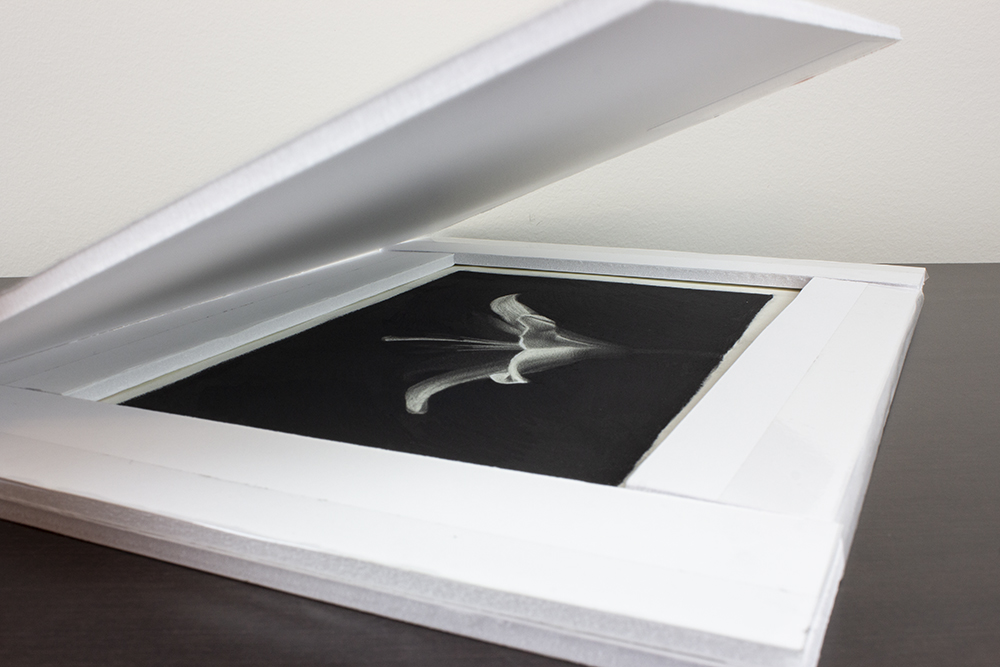
I prefer to store charcoal drawings in custom-sized carrying
cases.
These are constructed in a way that leaves space
above the drawing itself.
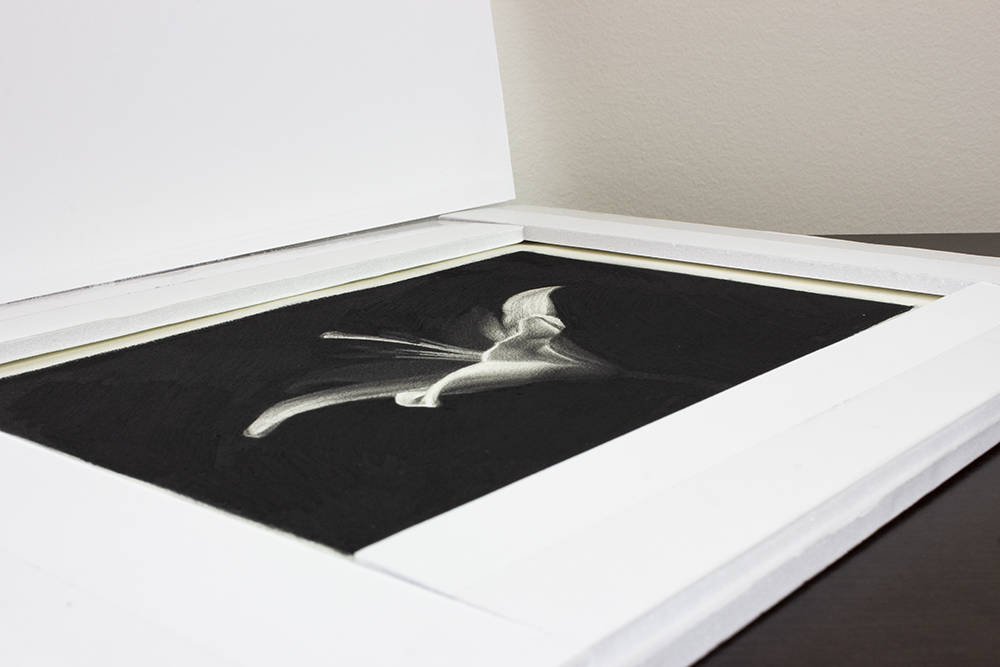
Made out of foam core board, these are lightweight yet sturdy, and are convenient for both storage and transportation by car or plane.
(If
you do transport a drawing in a carrying case via plane, take it with you as a carry-on item, and stash it below the seat in front of you
rather than putting it in the overhead bin, where it's likely to be squished.)
I construct these storage/carrying cases for drawings up to approximately 18" x 24", which also happens to be the standard size of foam core
board. For larger drawings, or for shipping, I build sturdier
boxes or crates using cardboard or wood, depending on the size of the drawing.
How to Store Charcoal Drawings
Materials Used to Build this Carrying Case:
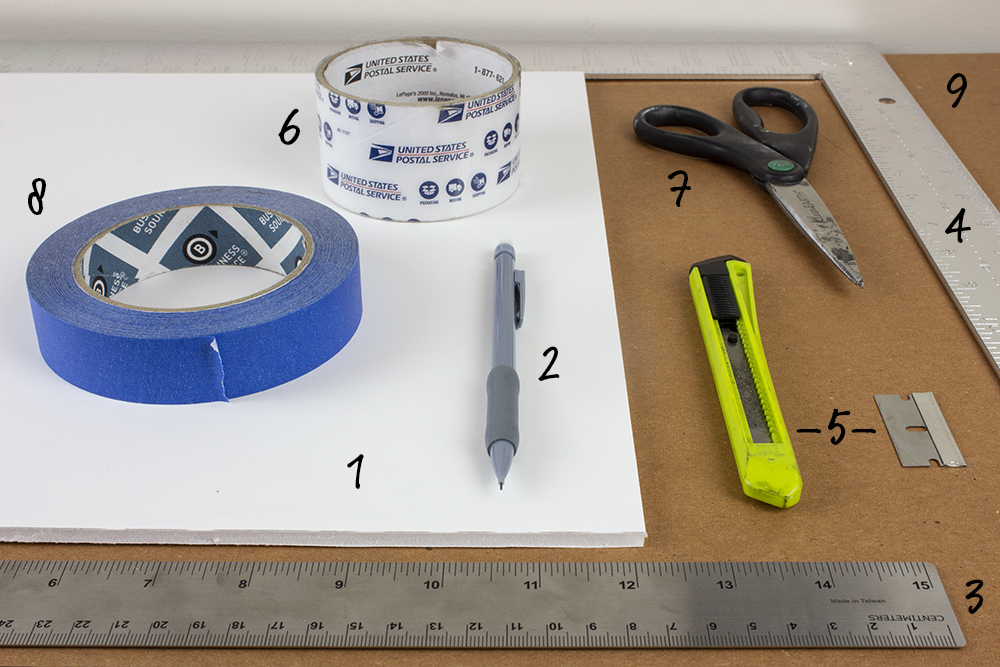
- Foam Core Board: 18" x 24" (standard size). You can purchase this at a dollar store, or at Michael's (I recommend Michael's - it is more expensive but better quality).
- Pencil: for marking measurements and lines
- Ruler
- Framing Square (optional but recommended)
- X-Acto Knife or Single-Edge Razor Blade
- Packing Tape
- Scissors
- Painter's Tape
- Cutting Mat or Cardboard (to cut on top of)
How to Store Charcoal Drawings
How to Make a Carrying Case for your Drawing
1. Begin with a clear working area, and your sheet of foam core.
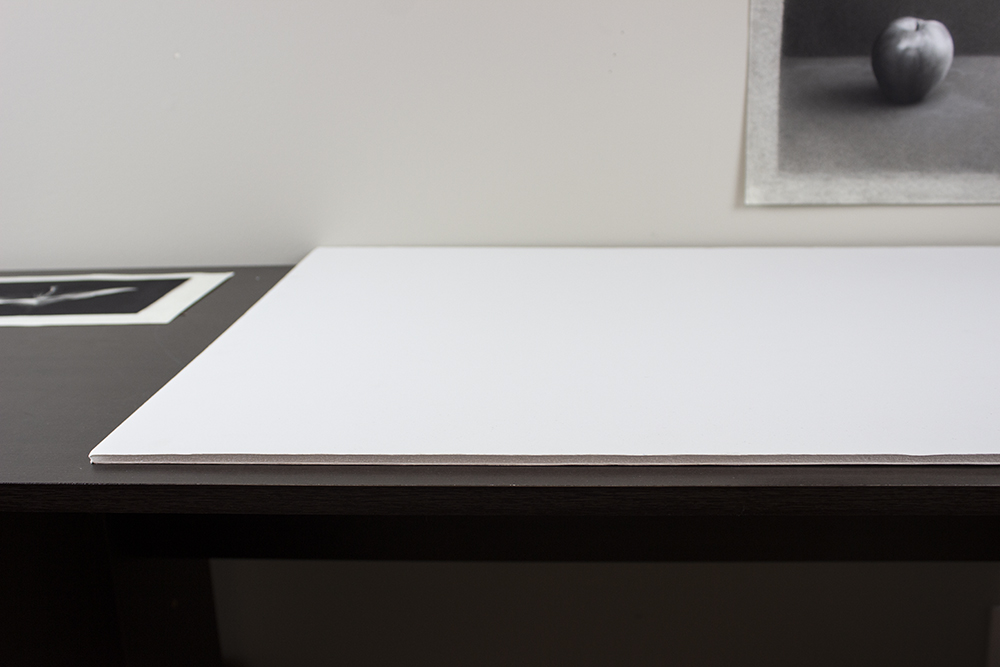
2. Place your drawing on the foam core. Determine and mark what size you will make the top and bottom planes of your carrying case.
Leave enough room for the side panels to be around 1.5" to 2" wide. If the side panels are too thin, there will be a greater chance that the cover of the case will bow in and touch the surface of your drawing.
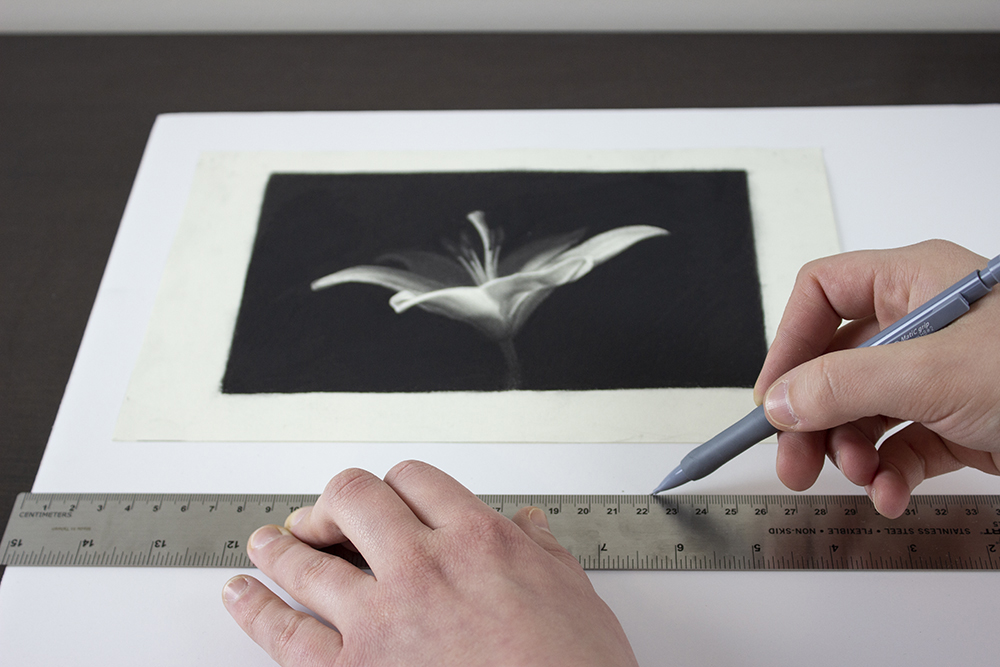
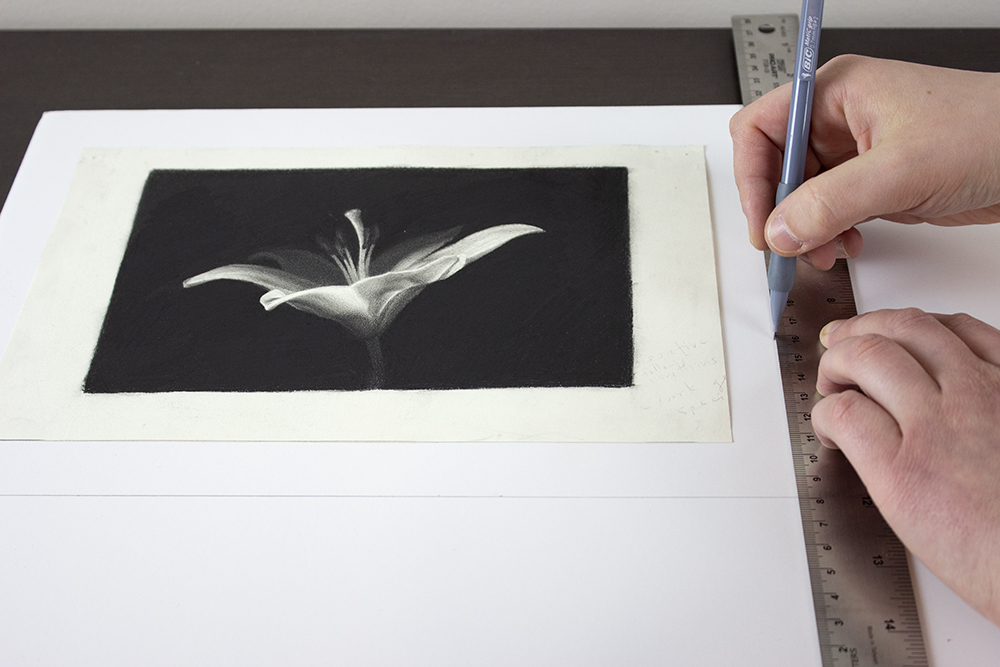
3. Remove your drawing from the foam core, and cut out the bottom plane of your carrying case using an X-acto knife or single-edge razor blade. Use whichever you have or prefer, just make sure that it is sharp!
(I switch from this X-acto knife to a single-edge razor blade half-way through this tutorial because the latter was much sharper and giving me much cleaner edges.)
Cut on top of a cutting mat or piece of cardboard to protect your work table.
Using a framing square is optional but useful for keeping the edges of the carrying case square.
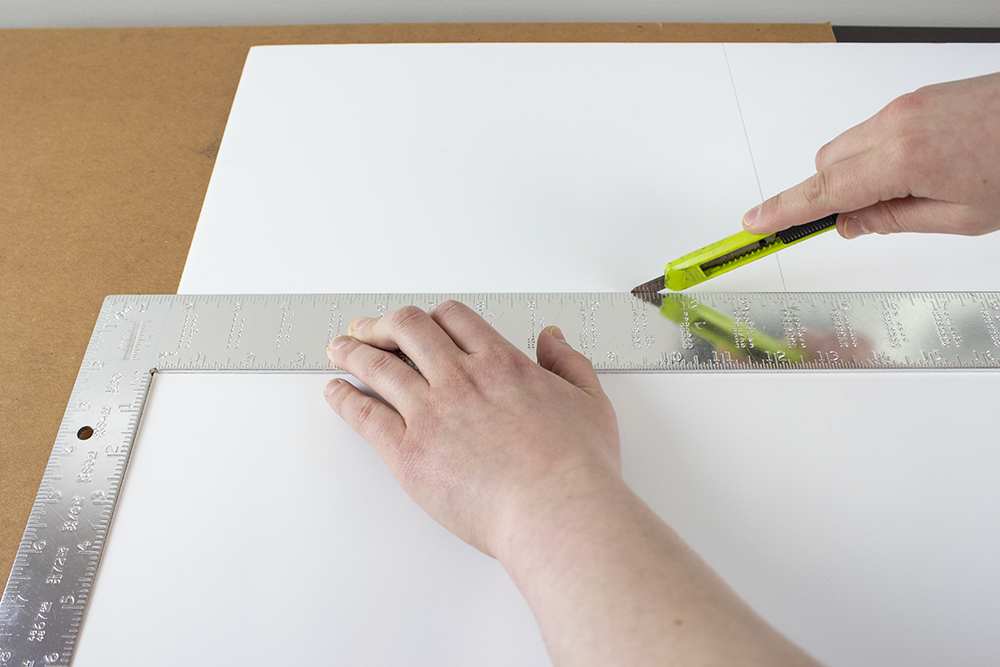
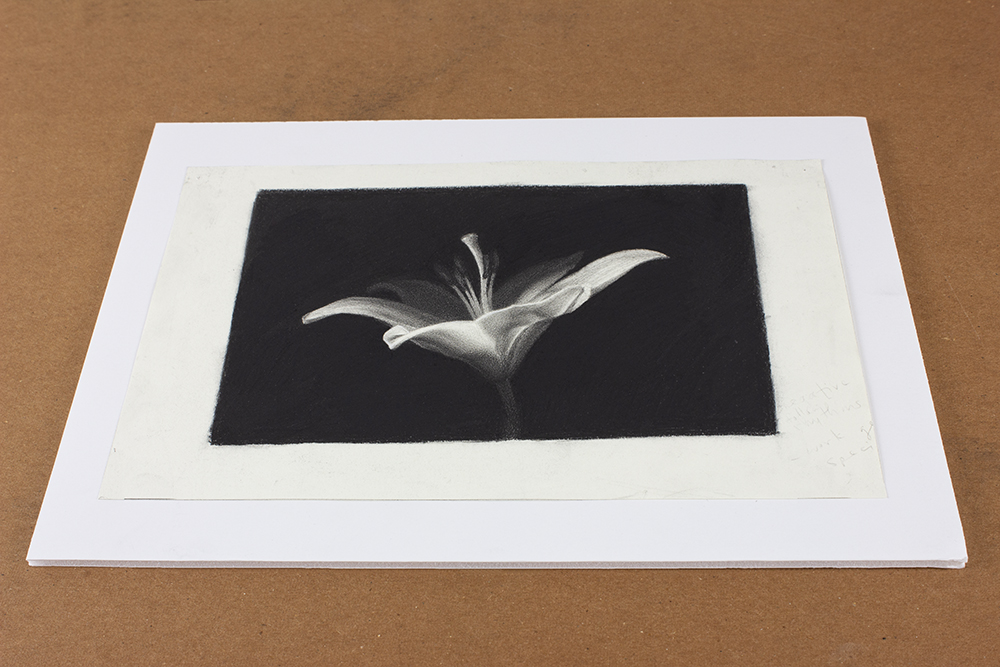 The cut out bottom plane of my carrying case.
The cut out bottom plane of my carrying case.
4. Using the bottom plane as a template, mark and cut out an equal-sized top plane, or cover, for your carrying case.
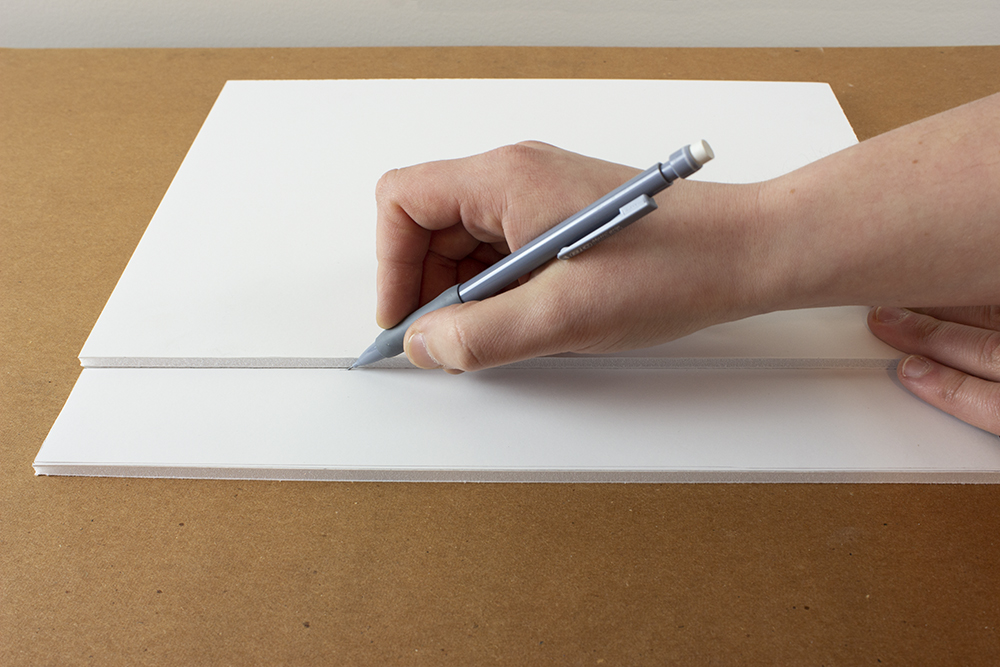
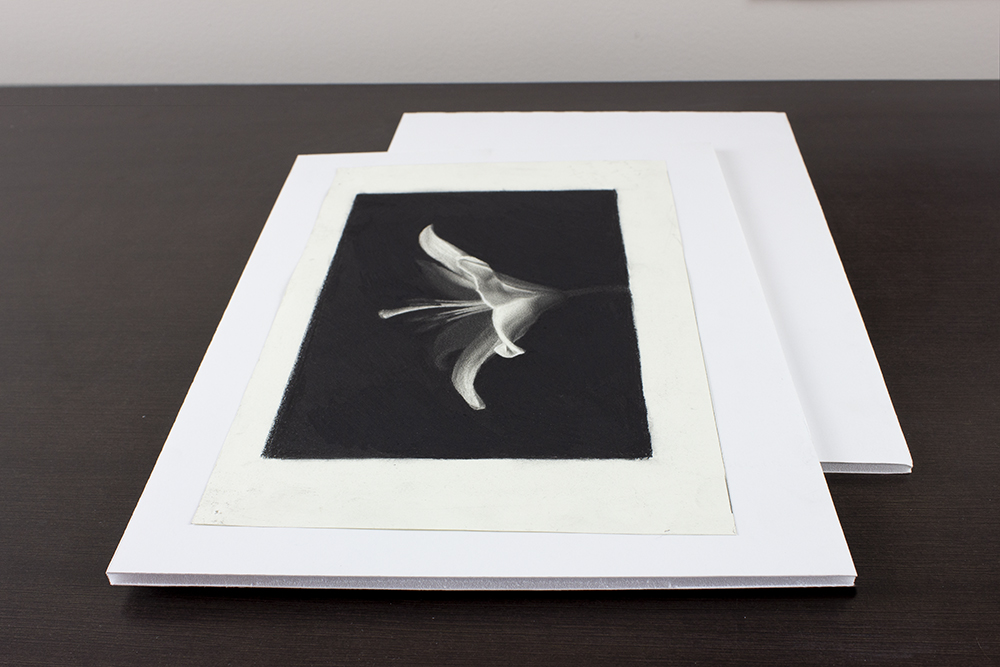 You should now have two equal-sized top and bottom planes of the carrying case.
You should now have two equal-sized top and bottom planes of the carrying case.
5. Next, let's figure out the dimensions of the left and right side panels.
The side panel is going to cover part of the border of my drawing, but not reach the drawing itself (having it rub against the drawing would defeat the purpose of what we're doing here). I'm going to make my first side panel about 1 and 3/4 inches wide.
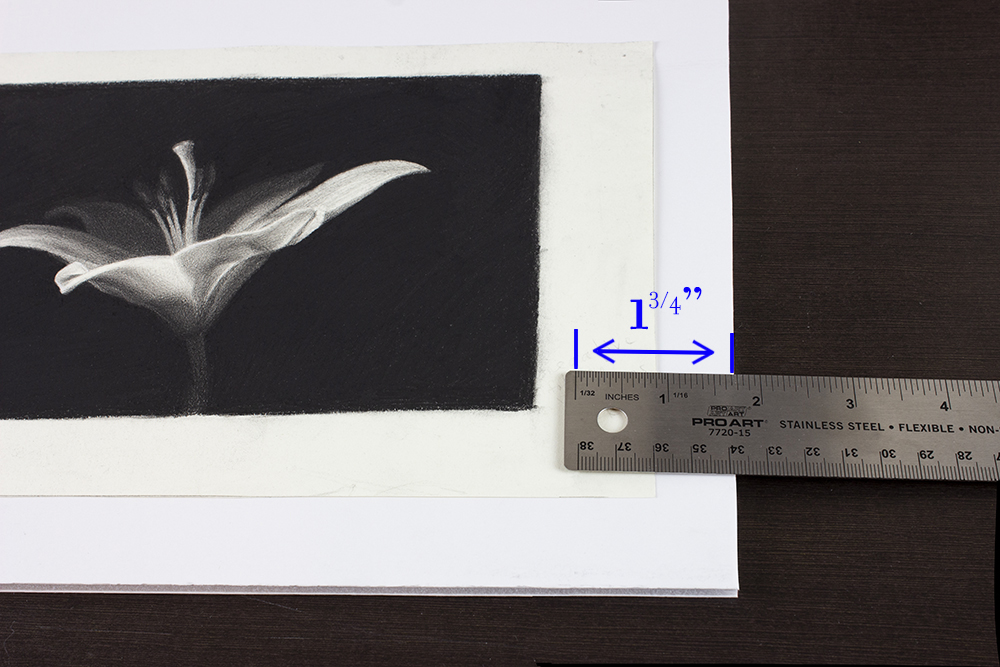
The same width will work for the left side panel as well (1 and 3/4"):
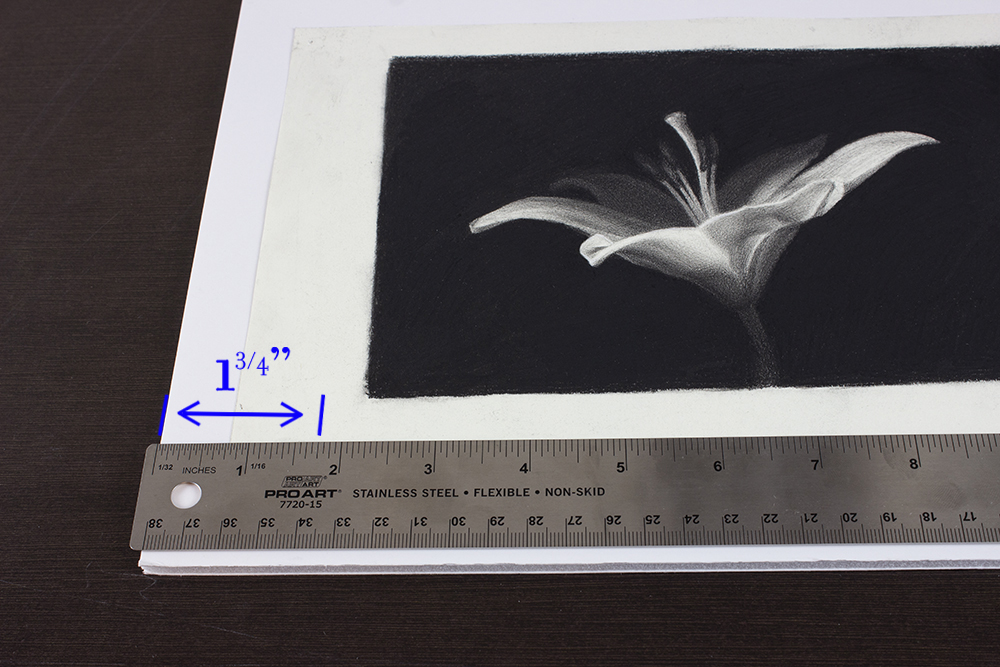
6. Cut out the two side panels, and place them on the bottom plane of your carrying case.
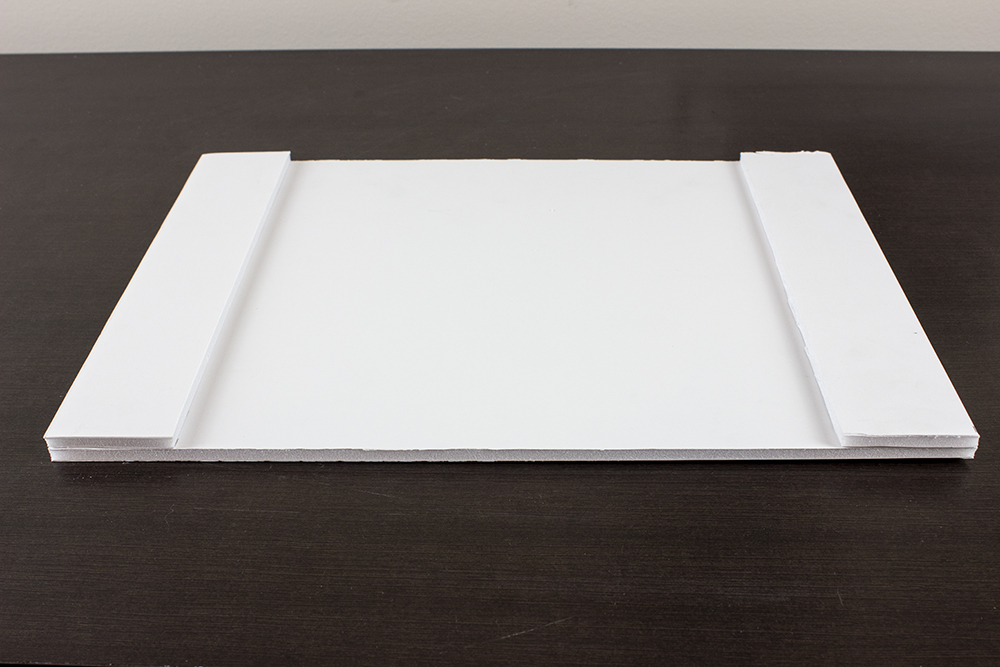
Now when I place my drawing in the center of my carrying case, the side panels partially cover the borders of the drawing, without reaching the drawing itself. Perfect!
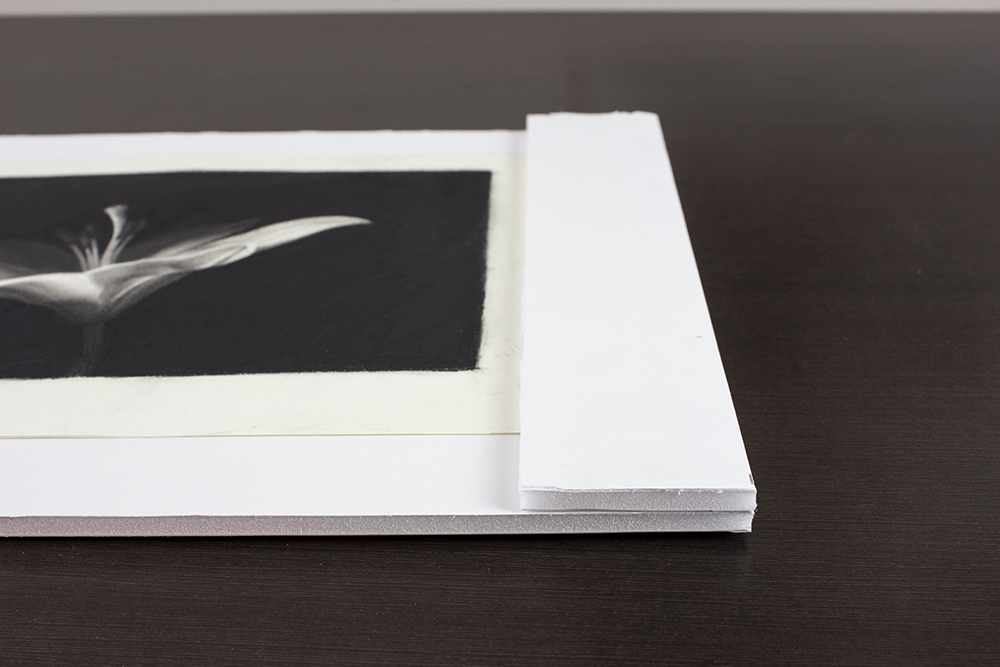
7. Tape the side panels to the bottom plane, only along the long edge so that you can open and close the flaps of the case. I am using clear packing tape.
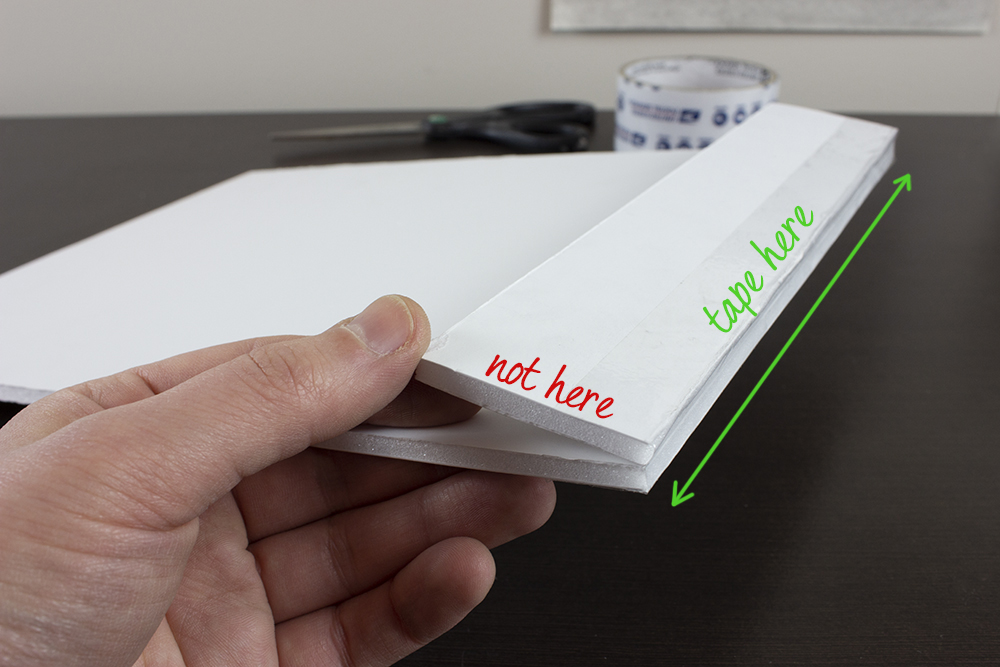
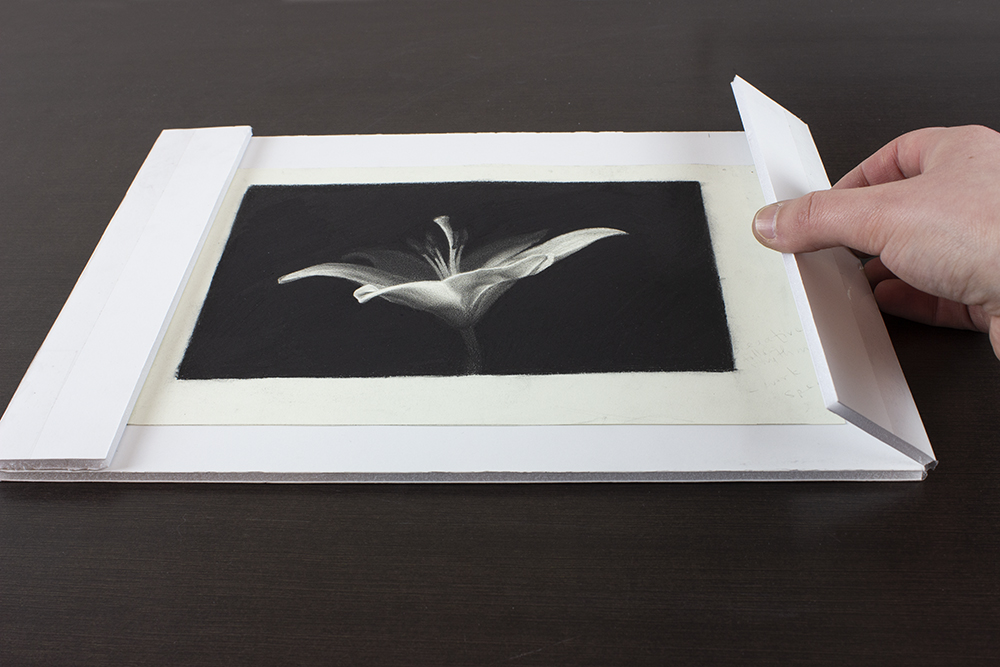
8. Determine the dimensions of the two remaining side panels. These top and bottom panels will need to fit in between the ones that you just taped on.
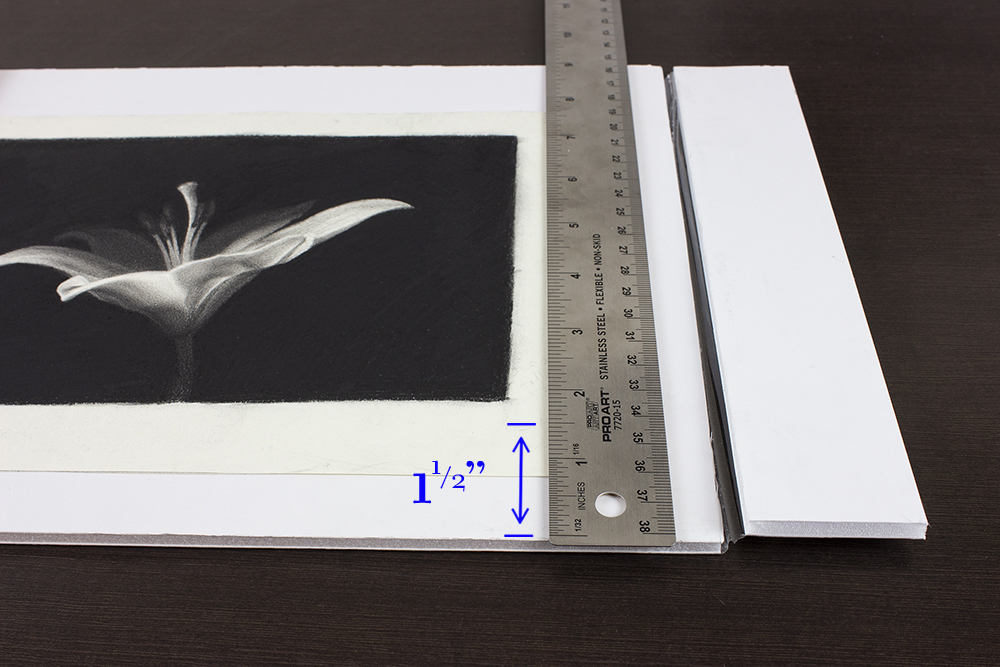
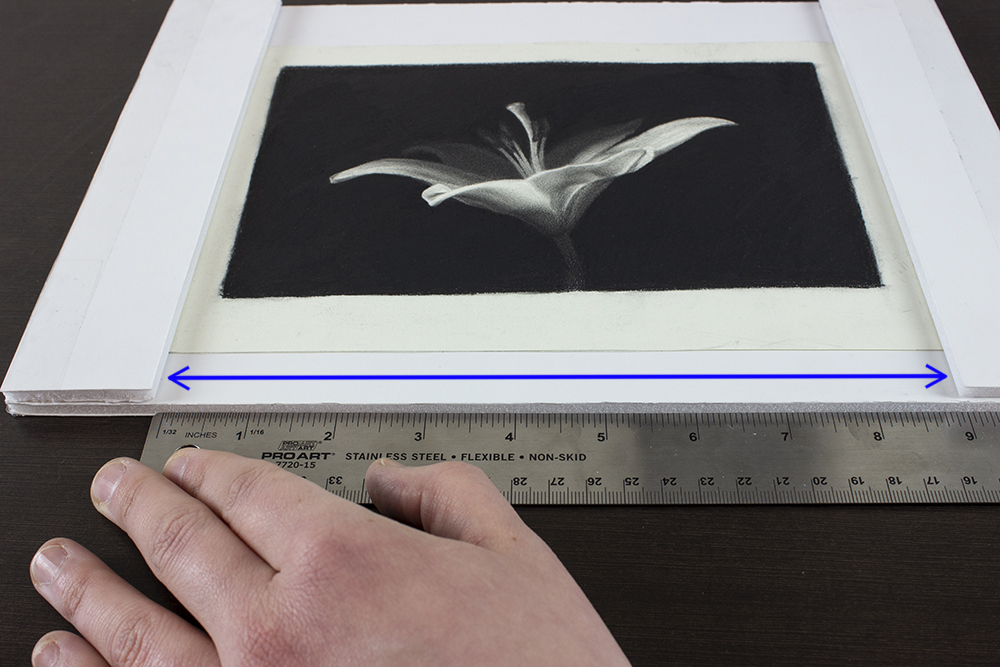
9. Cut out the remaining panels ...
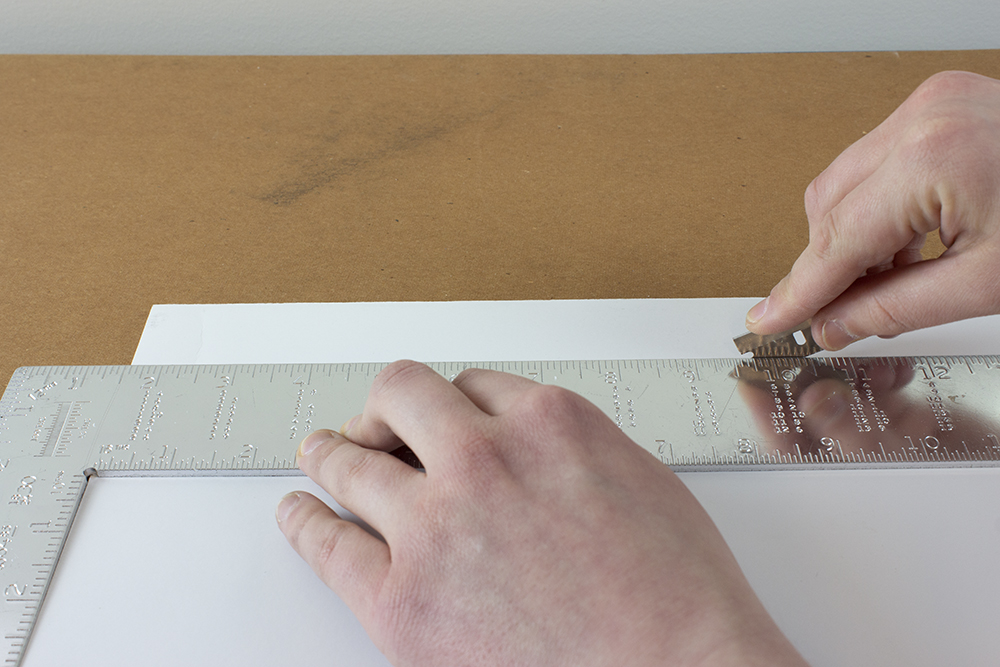
10. And arrange them on your carrying case:
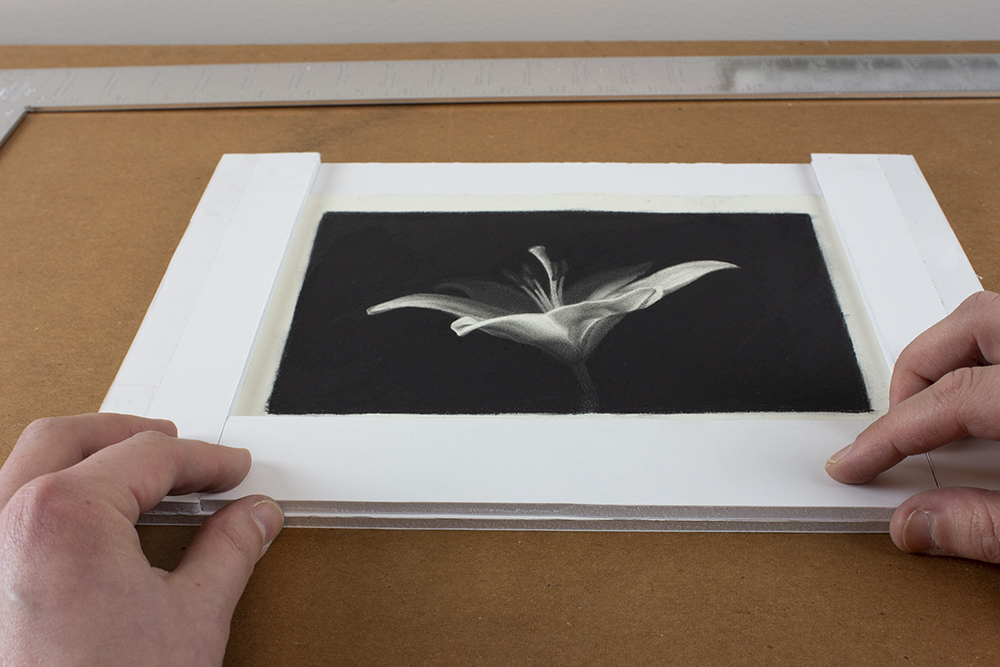
11. Tape the long edges of the remaining side panels, so that all four can be opened separately.
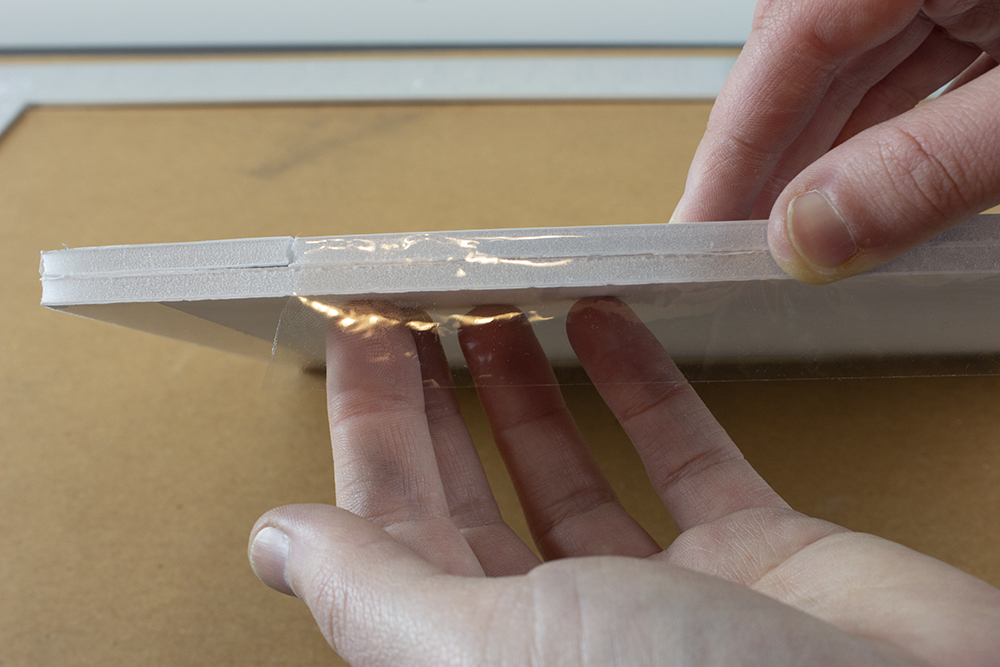
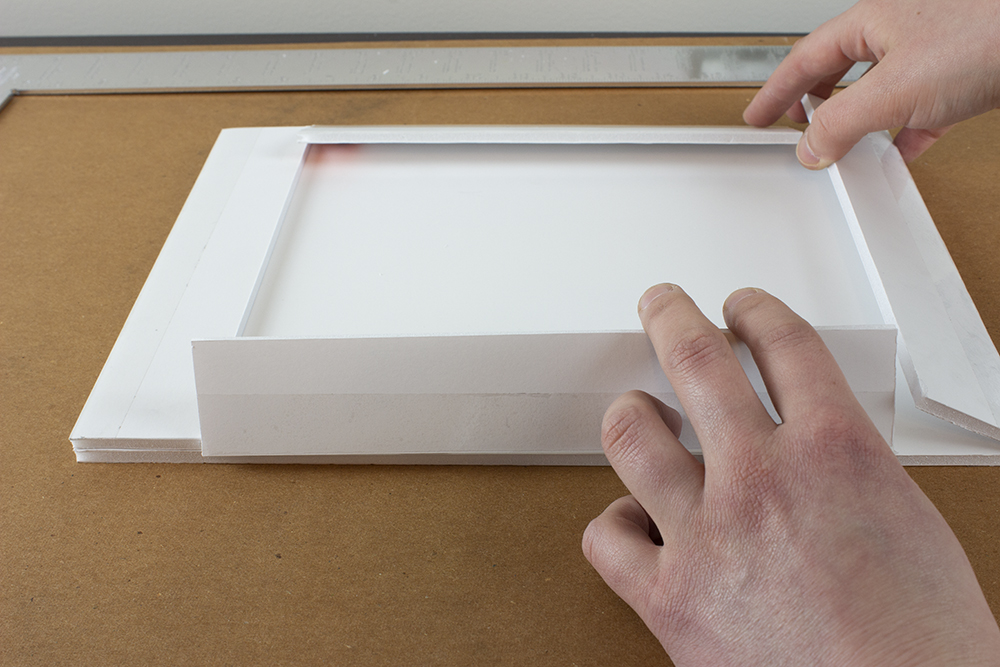 All four side panels can be opened separately.
All four side panels can be opened separately.
12. Center your drawing in the carrying case, and secure it using painter's tape.
As a precaution, I like to stick each piece of painter's tape to my clothing before adhering it to my drawing. This slightly lessens its stickiness and should prevent it from ripping my drawing.
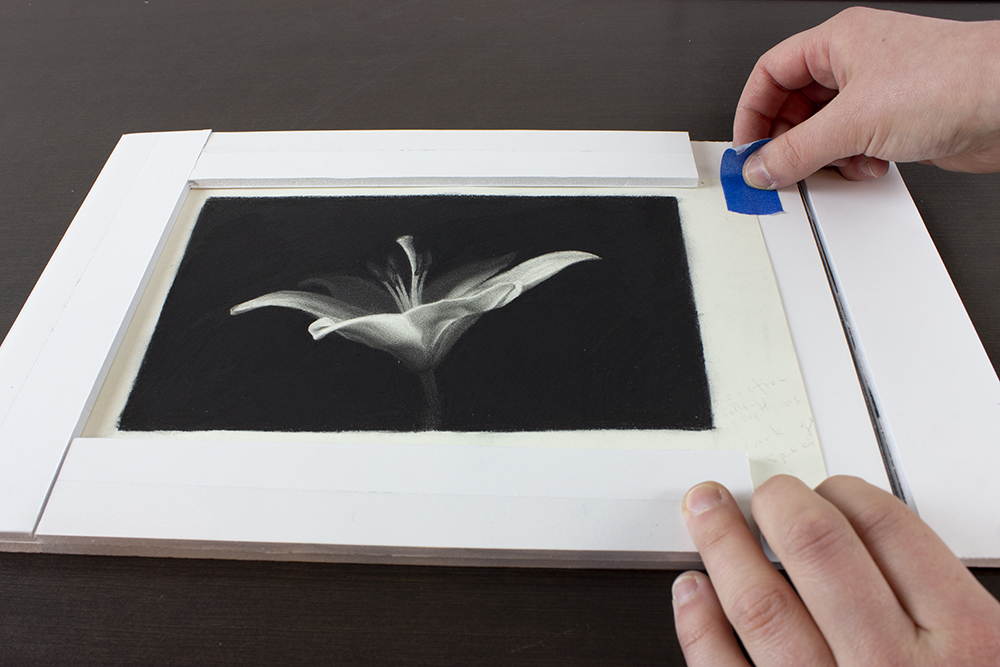
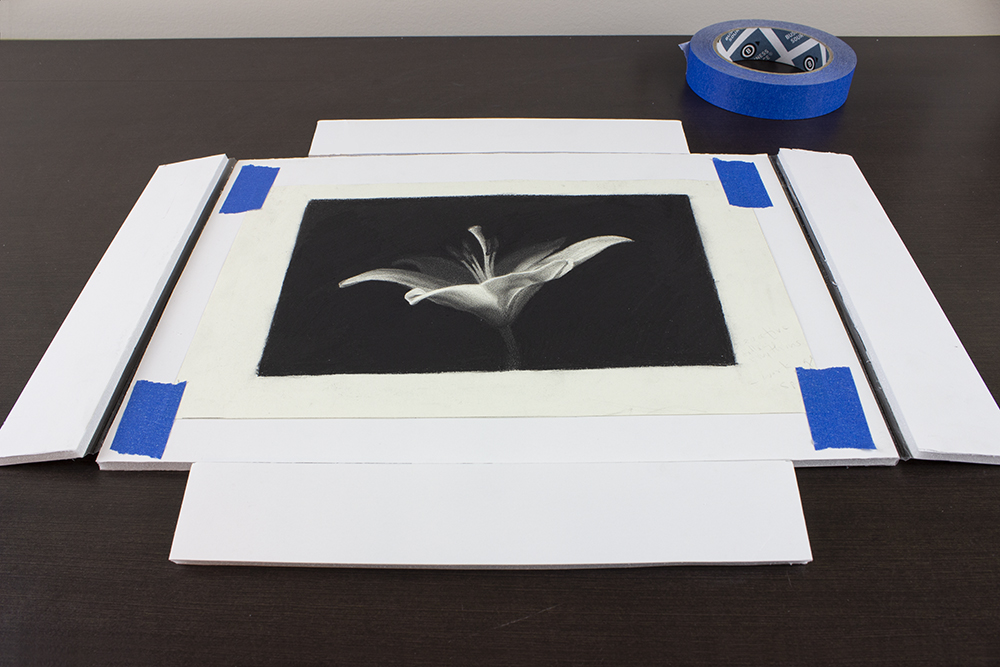 My drawing secured in its carrying case with painter's tape.
My drawing secured in its carrying case with painter's tape.
13. Add the cover to your carrying case.
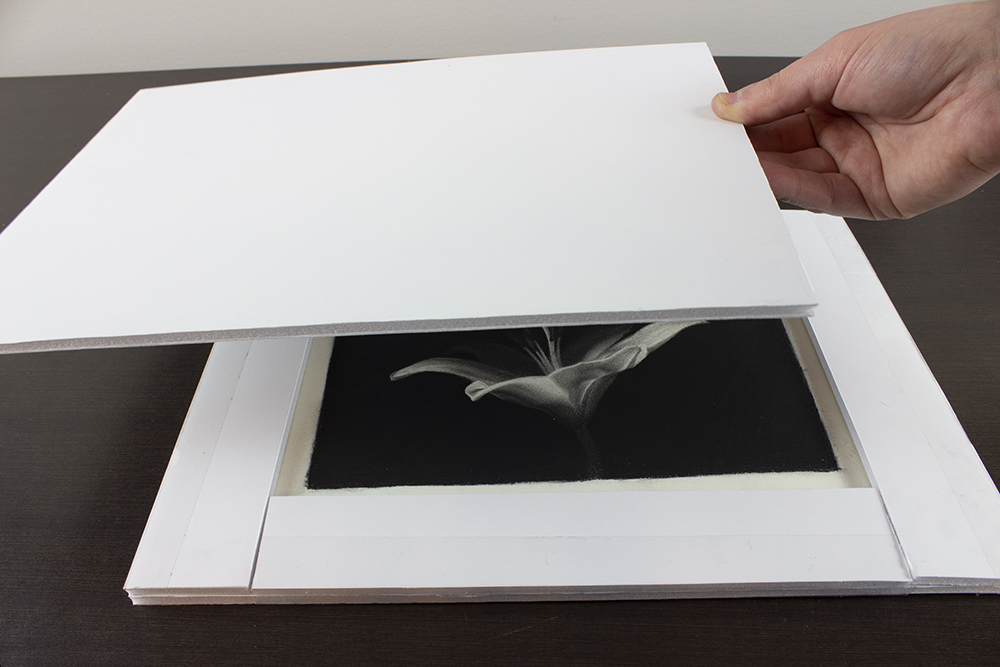
14. Tape one of the long edges of the cover using a more permanent tape, like the packing tape I have been using so far.
Tape the opposite edge using a removable tape, like painter's tape, so that you can easily open up the carrying case without distressing your drawing.
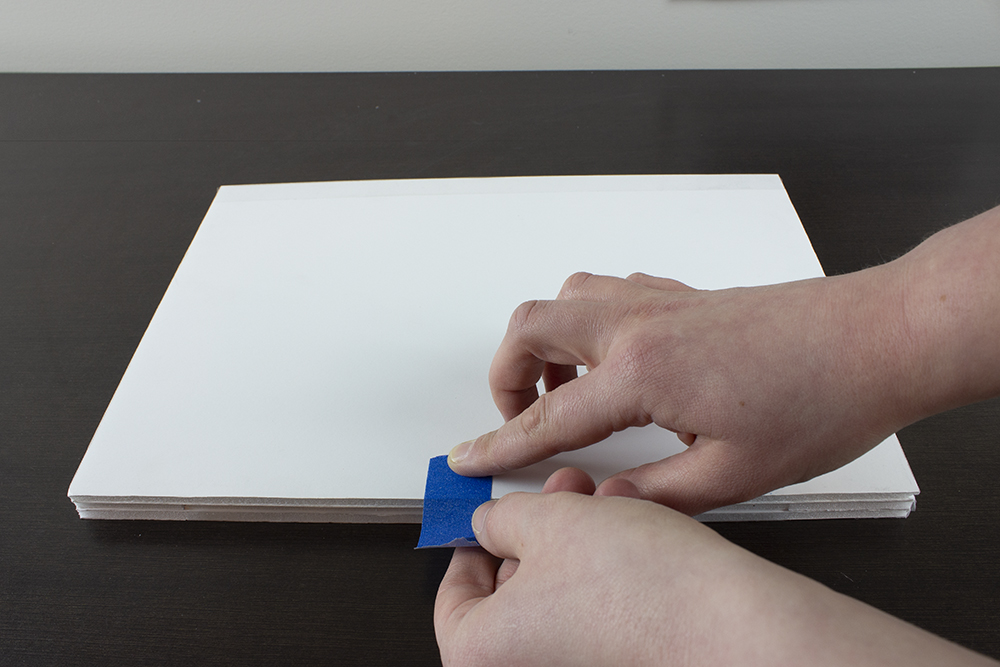
15. Admire your completed carrying case!
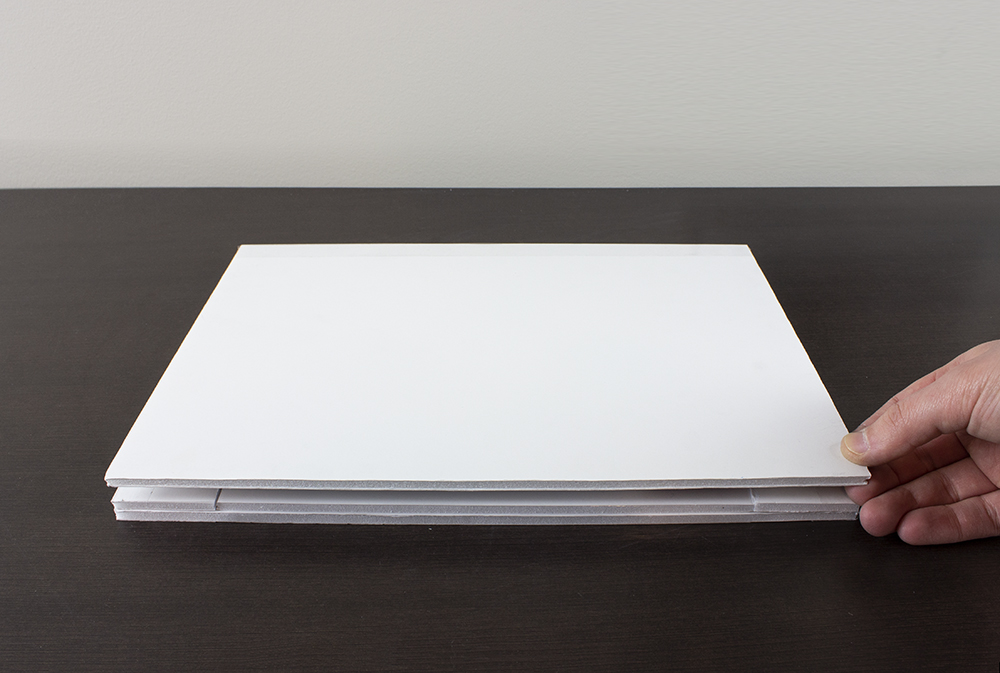
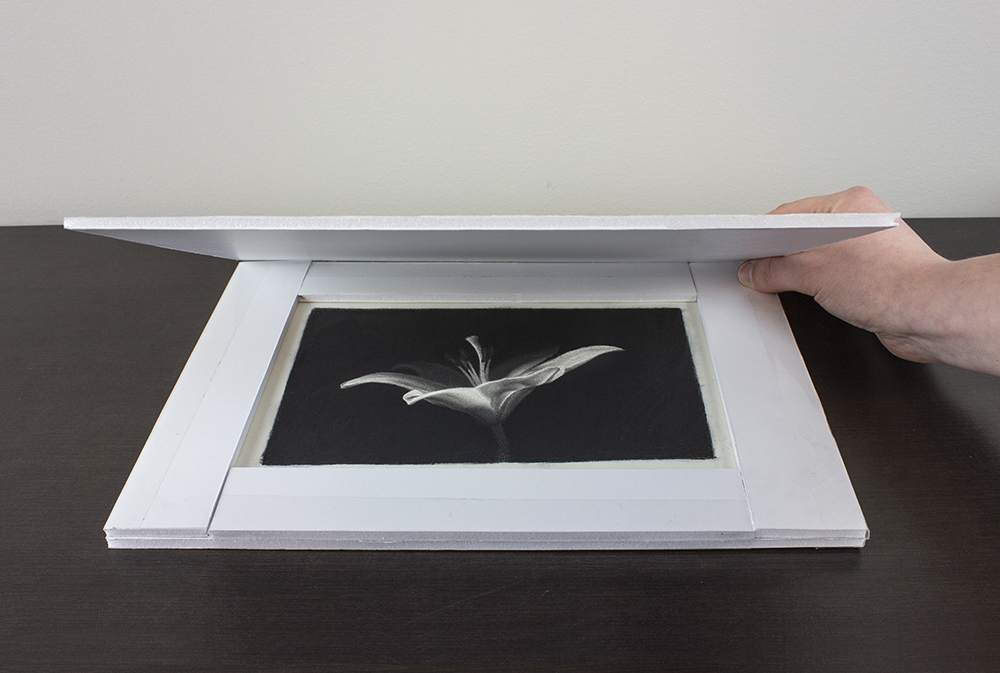

I hope this article helps you store your fabulous drawings safely and conveniently!
Have other ideas on how to store charcoal drawings? Leave a comment below!

Enjoyed this page? Please share it!
Share buttons and pinnable image below:
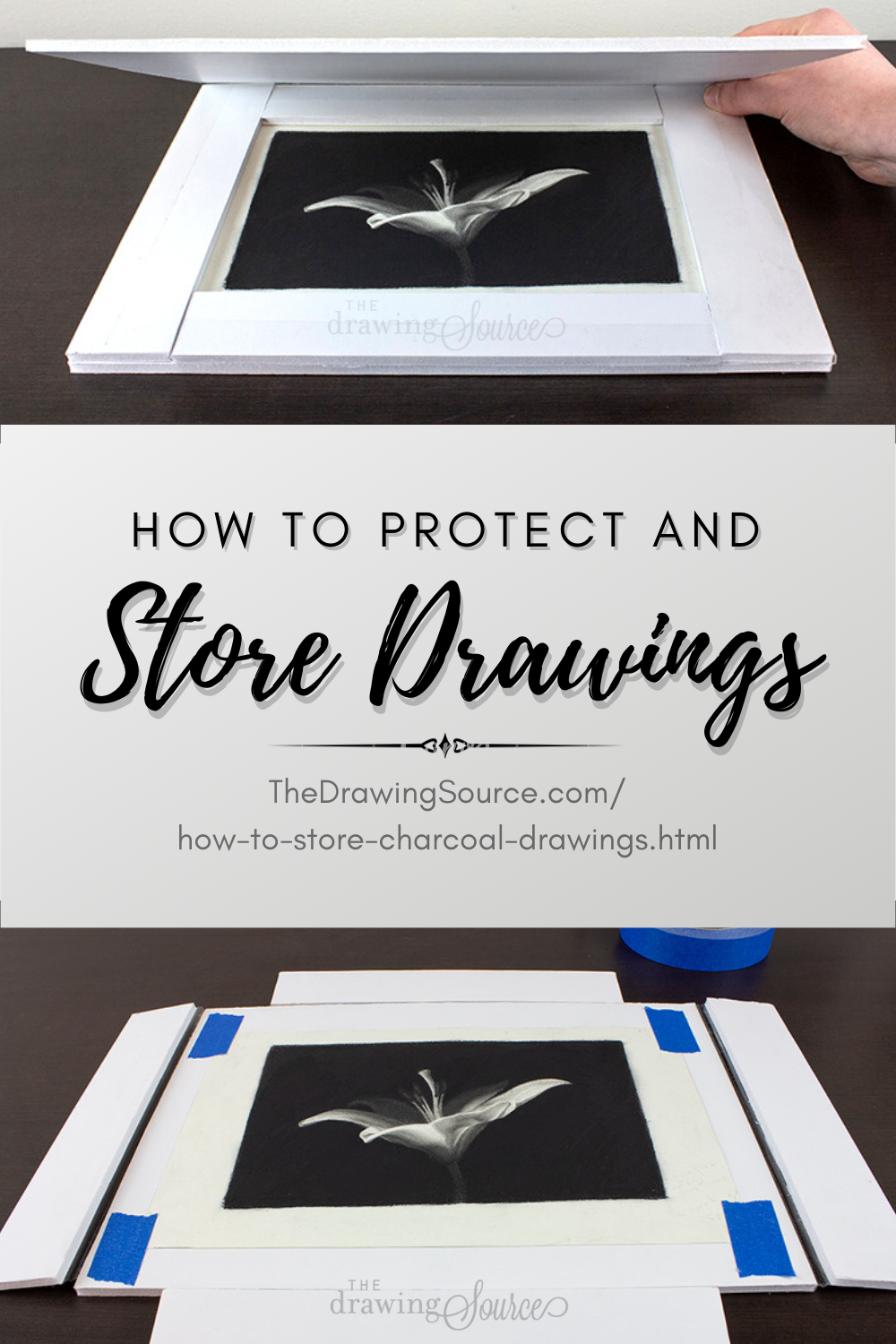
Related Pages
If you enjoyed this page on How to Store Charcoal Drawings, you may also enjoy ...
Return to Drawing Supplies from How to Store Charcoal Drawings
Return to the Homepage from How to Store Charcoal Drawings







